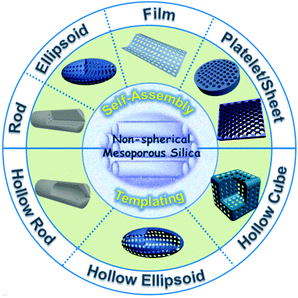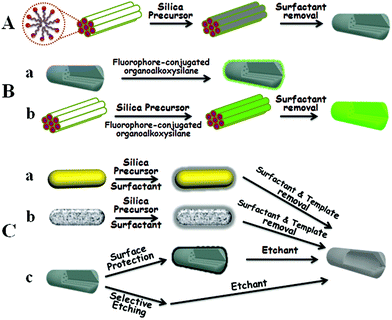Mesoporous silica nanomaterials have been successfully employed in the development of novel carriers for drug delivery. Numerous studies have been reported on engineering mesoporous silica-based carriers for drug loading, release, cellular uptake, and biocompatibility. A number of design parameters that govern the in vitro and in vivo performance of the carriers, including particle diameter, surface chemistry, and pore size, have been tuned to optimize nanomedicine efficacy. However, particle shape, which may generate a high impact on nanomedicine performance, has still not been thoroughly investigated. This is probably due to the limited availability of strategies and techniques to produce non-spherical mesoporous silica nanomaterials. Recent breakthroughs in controlling the particle shape of mesoporous silica nanomaterials have confirmed the important roles of shape on nanomedicine development. This review article introduces various fabrication methods for non-spherical mesoporous silica nanomaterials, including rod, ellipsoid, film, platelet/sheet, and cube, and the roles of particle shape in nanomedicine applications. Biomater. Sci., 2016 
Non-spherical mesoporous silica materials synthesized by a self-assembly strategy or templating strategy. 
Scheme of methods for the synthesis of rod-shaped mesoporous silica. (A) Synthesis of RMSNs by tuning reaction conditions to form long surfactant micelles. (B) Synthesis of fluorescent RMSNs by the post-synthesis grafting method (a) and the co-condensation method (b). (C) Synthesis of hollow RMSNs by the hard template method (a), the soft template method (b), and the self-template method (c). |

